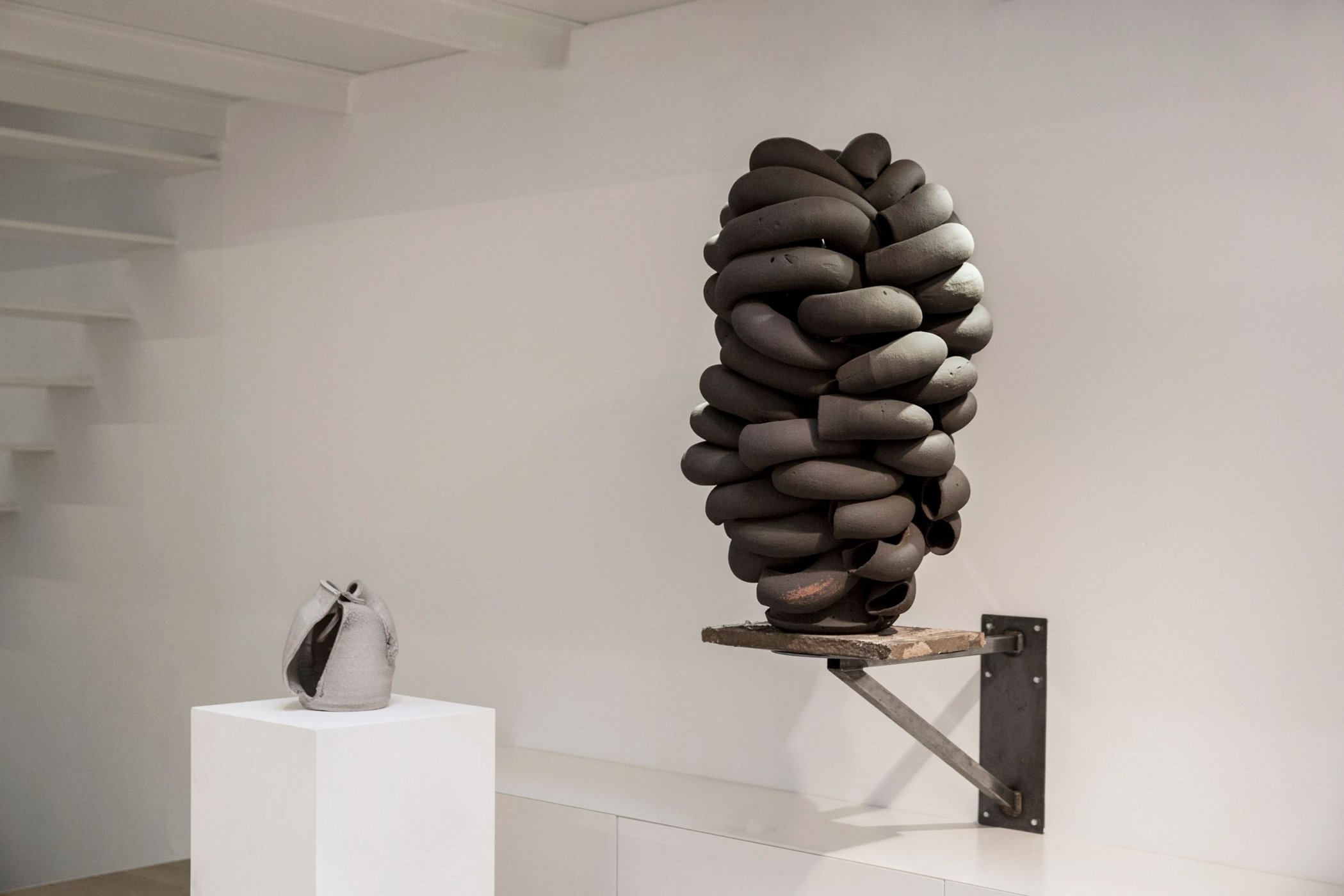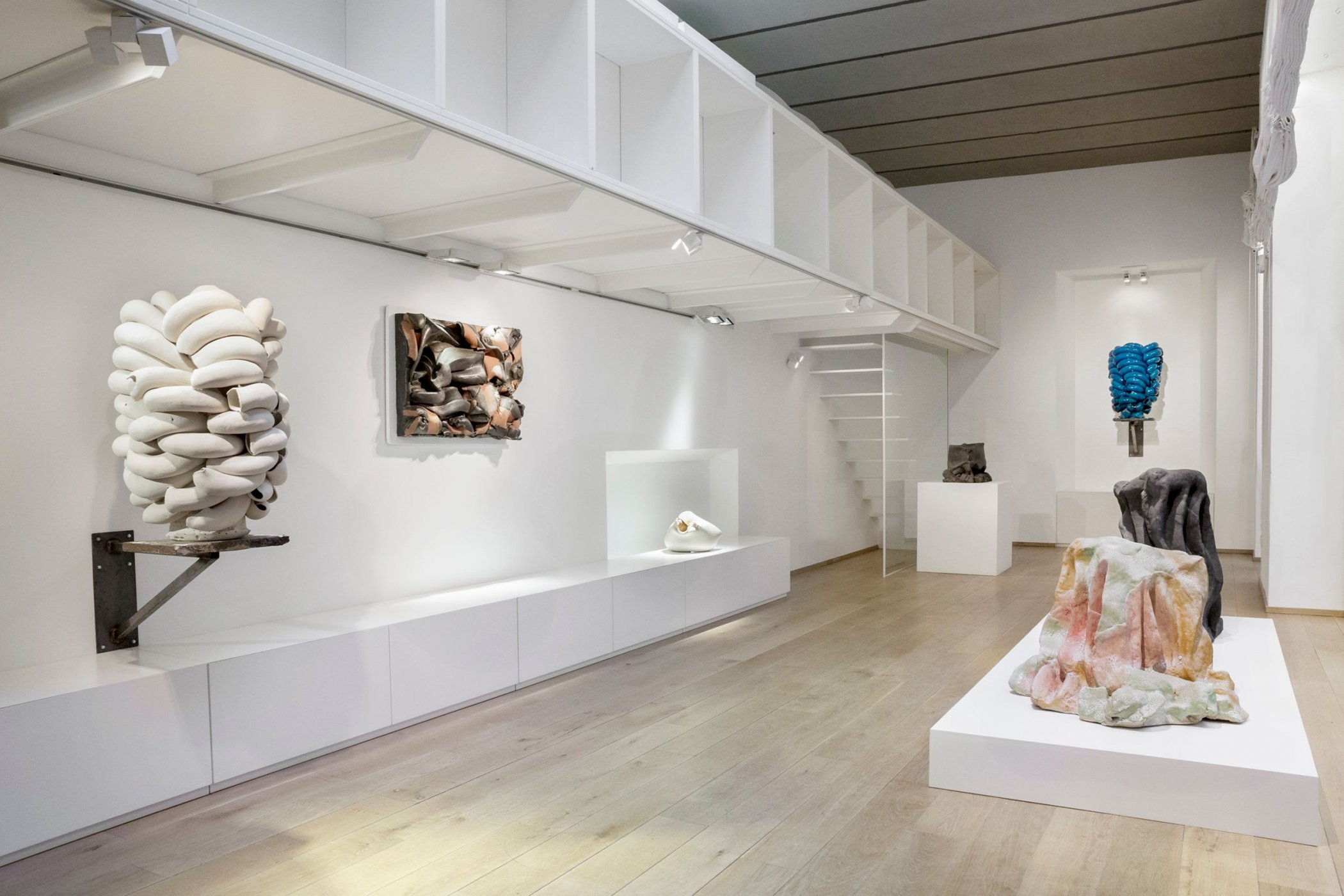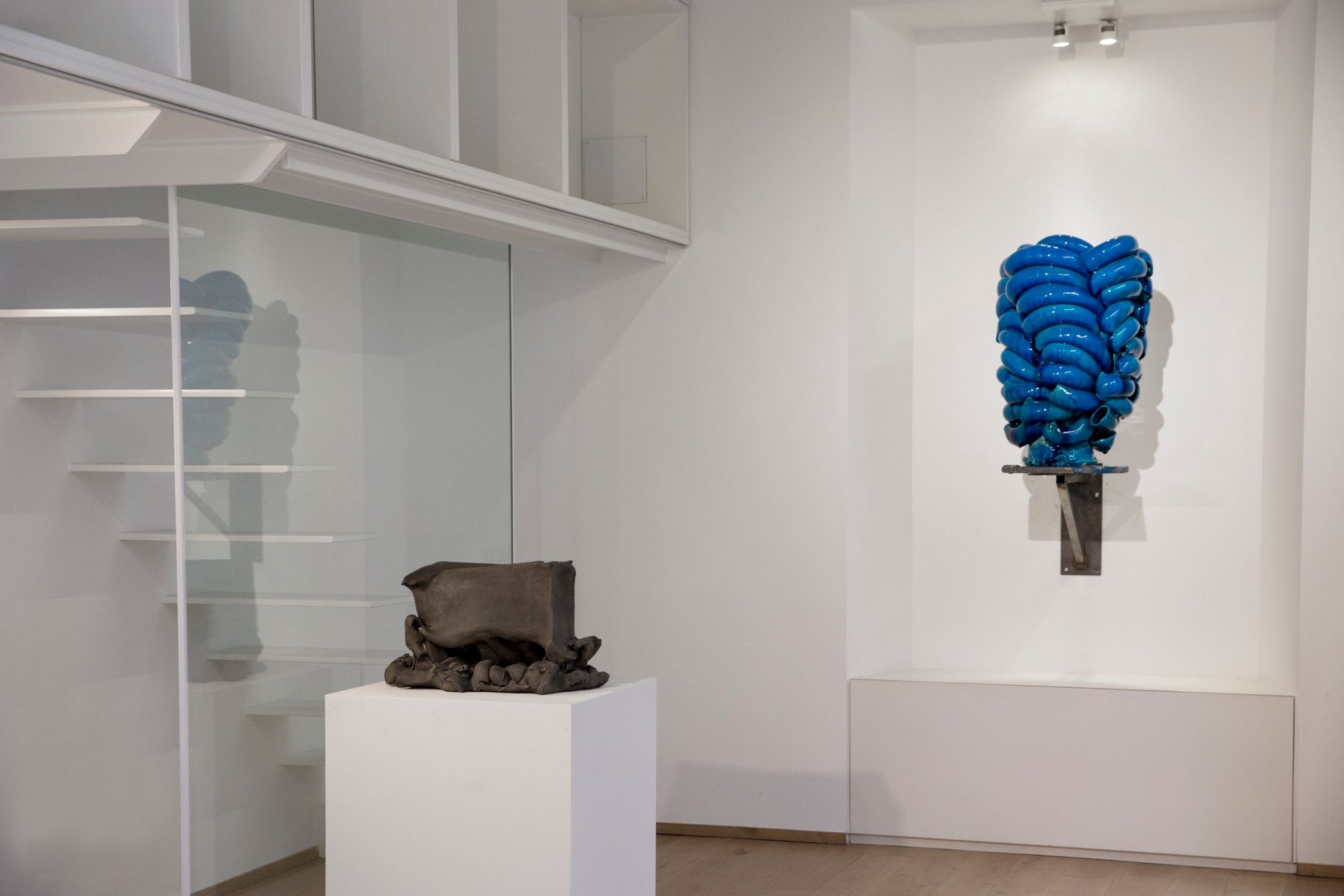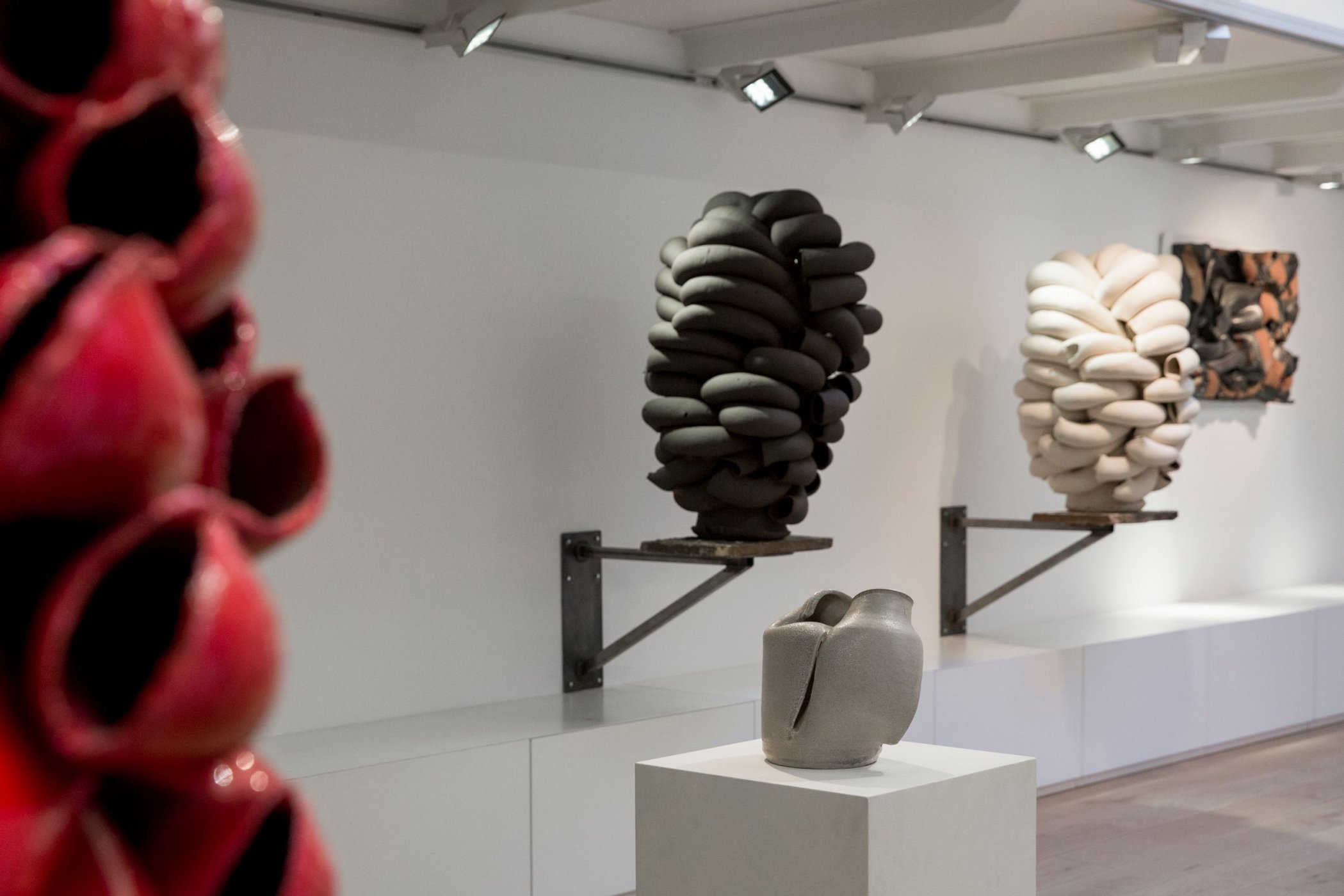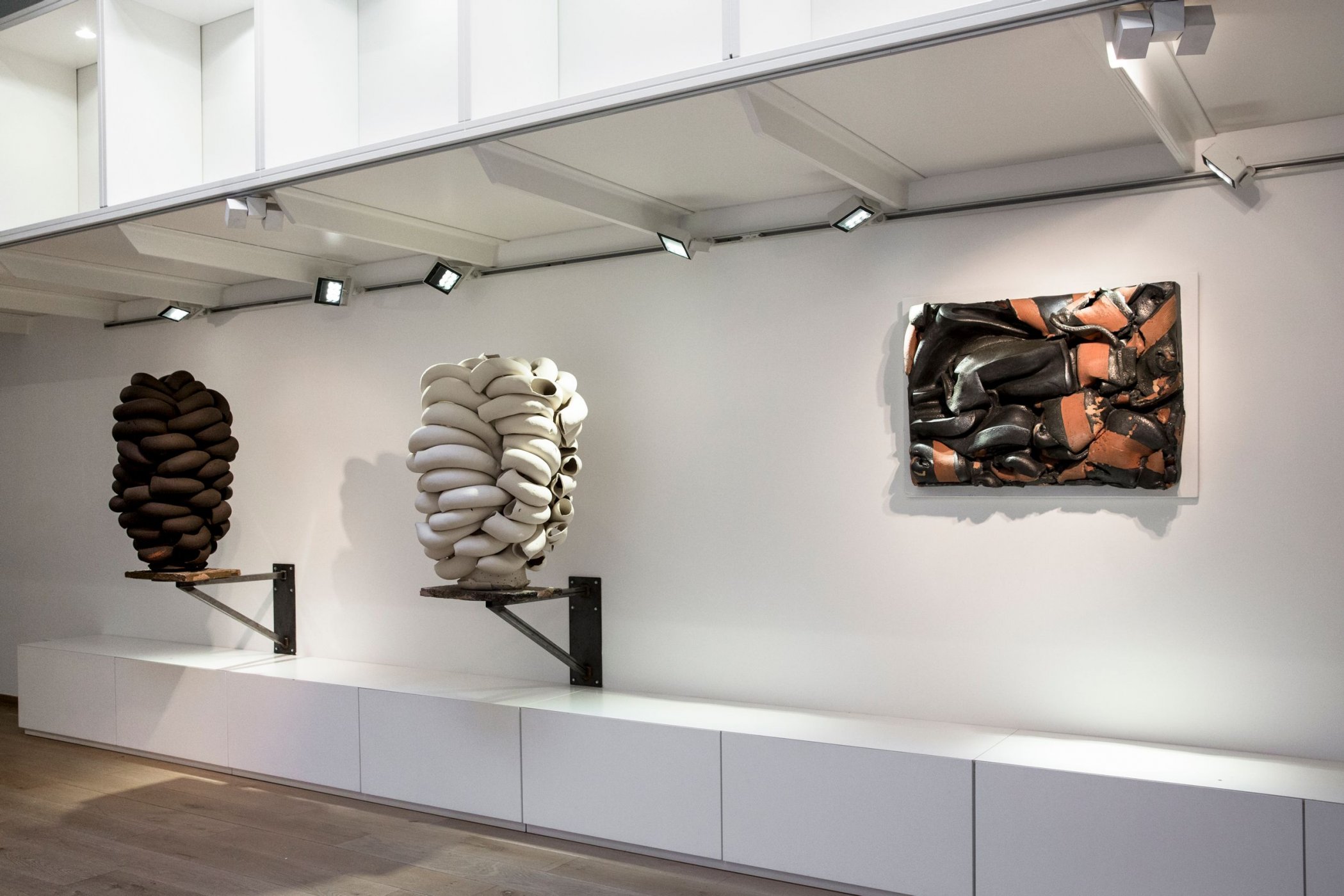Geometry of Chaos. Carlo Zauli, Torbjørn Kvasbø.
December 15, 2016 - February 10 , 2017
Staged in collaboration with Museo Carlo Zauli and under the patronage of the General Royal Consulate of Norway, the intersection between Carlo Zauli's historic works and the wholly contemporary pieces by Torbjørn Kvasbø can be placed into relation with one of the most intense collections of poetry of the last few decades, Geometria del disordine by Maria Luisa Spaziani.
"Zauli and Kvasbø are from different generations and different geographical areas, but they reveal certain similarities in their approach. Both start from a critically important aspect, the negation of pre-ordained form and the idea of the work not as the realization of a constructional process, but rather as the affirmation of the questions intrinsic to the process itself".
The focus for Carlo Zauli is the simple "lump" of clay, to which he gives shape enhancing its mysterious internal tensions. This was the genesis of works as Zolle (Clods), Aratura (Plowing) or Vasi Sconvolti (Distorted Vases). They prove the deep bond between the artist and the clay, and his search to capture: “the sign of and in the clay, of and in the nature which can transmit that vital and constructive sense that is always present around and in us".
Torbjørn Kvasbø celebrates this bond with clay by starting with the archetype of the form-container and examining its role in human history. His quest renews and rivivify this material in a colourful series called Stack, on show at the exhibition. This works have as reference the classic form of the vase destructured and given to a new plastic reference, through the multiplication of tubular segments assembled in a spiral. "A form which at the same time is a body in its own right, a three-dimensional torso with its own gestures and feelings". The work shows awareness of an innate resistance in the material, over which Kvasbø knows he has no control, and that through the sign it becomes interpreter of the inner emotional states of the artist.
"Zauli and Kvasbø are from different generations and different geographical areas, but they reveal certain similarities in their approach. Both start from a critically important aspect, the negation of pre-ordained form and the idea of the work not as the realization of a constructional process, but rather as the affirmation of the questions intrinsic to the process itself".
The focus for Carlo Zauli is the simple "lump" of clay, to which he gives shape enhancing its mysterious internal tensions. This was the genesis of works as Zolle (Clods), Aratura (Plowing) or Vasi Sconvolti (Distorted Vases). They prove the deep bond between the artist and the clay, and his search to capture: “the sign of and in the clay, of and in the nature which can transmit that vital and constructive sense that is always present around and in us".
Torbjørn Kvasbø celebrates this bond with clay by starting with the archetype of the form-container and examining its role in human history. His quest renews and rivivify this material in a colourful series called Stack, on show at the exhibition. This works have as reference the classic form of the vase destructured and given to a new plastic reference, through the multiplication of tubular segments assembled in a spiral. "A form which at the same time is a body in its own right, a three-dimensional torso with its own gestures and feelings". The work shows awareness of an innate resistance in the material, over which Kvasbø knows he has no control, and that through the sign it becomes interpreter of the inner emotional states of the artist.

